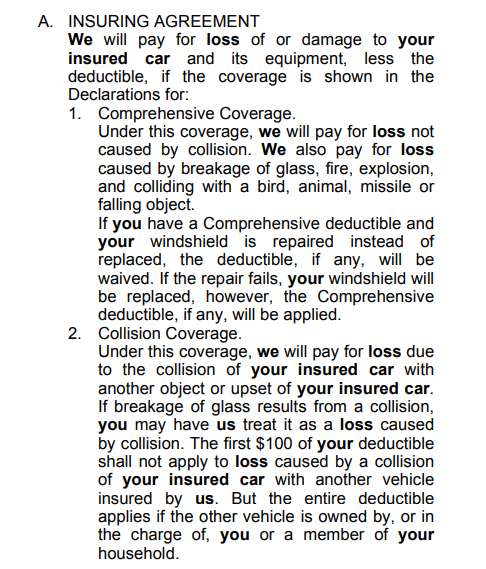The 10-Minute Rule for Pacific Prime
Table of ContentsThe Best Guide To Pacific PrimeExcitement About Pacific PrimeThe 5-Minute Rule for Pacific PrimeA Biased View of Pacific Prime
In many states, the insurance firm is called for to send you a duplicate of the modifications to your policy. It is necessary that you read Endorsements or Cyclists so you recognize just how your plan has altered and if the plan is still adequate to meet your requirements. To obtain a duplicate of your insurance coverage, please contact your insurance policy agent or company.
The Institute of Medication (IOM) Committee on the Consequences of Uninsurance launches a prolonged examination of proof that addresses the value of health and wellness insurance coverage with the publication of this report. Insurance coverage Matters is the very first in a collection of six reports that will be provided over the next 2 years recording the reality and consequences of having an approximated 40 million individuals in the United States without health insurance protection.

10 Simple Techniques For Pacific Prime
The objective of this series of research studies is to redouble policy attention on a historical trouble. Following the lengthiest financial growth in American background, in 1999, an estimated one out of every six Americans32 million grownups under the age of 65 and greater than 10 million childrenremains uninsured (Mills, 2000).

10 percent of the populace make up 70 percent of health and wellness treatment expenses, a correlation that has actually stayed continuous over the past 3 decades (Berk and Monheit, 2001) - international health insurance. Hence medical insurance remains to serve the feature of spreading out risk also as it increasingly finances routine treatment. From the viewpoint of healthcare companies, insurance lugged by their individuals assists protect a revenue stream, and neighborhoods benefit from monetarily viable and secure health treatment experts and institutions
Federal government provides wellness insurance to populaces whom the private market may not serve efficiently, such as disabled and elderly individuals, and populations whose accessibility to health and wellness treatment is socially valued, such as children and expecting women. The ultimate ends of health insurance coverage for the individual and communities, consisting of office neighborhoods of workers and employers, are improved wellness results and high quality of life.
Pacific Prime for Dummies
Staff members rank wellness insurance policy initially by much in find more info significance among all the advantages provided in the workplace (Salisbury, 2001). There have been large investments of personal and public funds to offer health insurance policy, several people still have no protection. In spite of substantial reporting of study findings and healthcare study results, the general public stays overwhelmed and misinformed concerning Americans without medical insurance and the implications of lacking insurance coverage.

Without concern, the intricacy of American healthcare funding devices and the wealth of sources of info include to the general public's confusion and uncertainty concerning medical insurance data and their interpretation. This report and those that will comply with purpose to boil down and offer in readily reasonable terms the substantial study that births on questions of medical insurance protection and its significance.
Fifty-seven percent of Americans surveyed in 1999 believed that those without health and wellness insurance coverage are "able to obtain the treatment they require from physicians and health centers" (Blendon et al., 1999, p. 207). In 1993, when national attention was concentrated on the issues of the uninsured and on pending health care regulations, just 43 percent of those polled held this idea (Blendon et al., 1999).

They additionally get less precautionary solutions and are much less most likely to have routine take care of persistent problems such as hypertension and diabetic issues. Chronic diseases can result in pricey and disabling issues if they are not well handled (Lurie et al., 1984; Lurie et al., 1986; Ayanian et al., 2000). One nationwide survey asked greater than 3,400 grownups regarding 15 extremely severe or dark conditions.
The 8-Minute Rule for Pacific Prime
Added proof exists later on in this chapter in the discussion of insurance policy and accessibility to wellness care. https://www.huntingnet.com/forum/members/pacificpr1me.html. People without health insurance are young and healthy and balanced and choose to do without coverage. Almost fifty percent (43 percent) of those surveyed in 2000 thought that people without health insurance policy are most likely to have illness than individuals with insurance
Citizens and policy manufacturers in focus group conversations define those without insurance policy as young individuals who have the possibility to be covered and feel they do not require it (Doorperson Novelli, 2001). Compared to those with a minimum of some private coverage, the without insurance are less likely to report remaining in outstanding or excellent wellness (Agency for Medical Care Research and High Quality, 2001).
RESOURCE: Center for Cost and Financing Researches, Agency for Medical Care Study and Quality, based on MEPS data. Young grownups between 19 and 34 are much more most likely to lack health and wellness insurance coverage than any various other age team. This is chiefly because they are less commonly qualified for employment-based insurance due to the nature of their job or their short tenure in it.
The understanding that individuals without insurance have better-than-average health complies with from puzzling the relatively young age account of the without insurance with the far better wellness, usually, of more youthful individuals. This covers the web link between health standing and health insurance. For those without access to work environment health and wellness insurance coverage, bad wellness is a possible obstacle to acquiring nongroup protection since such protection may be highly valued, leave out pre-existing problems, or be just inaccessible.